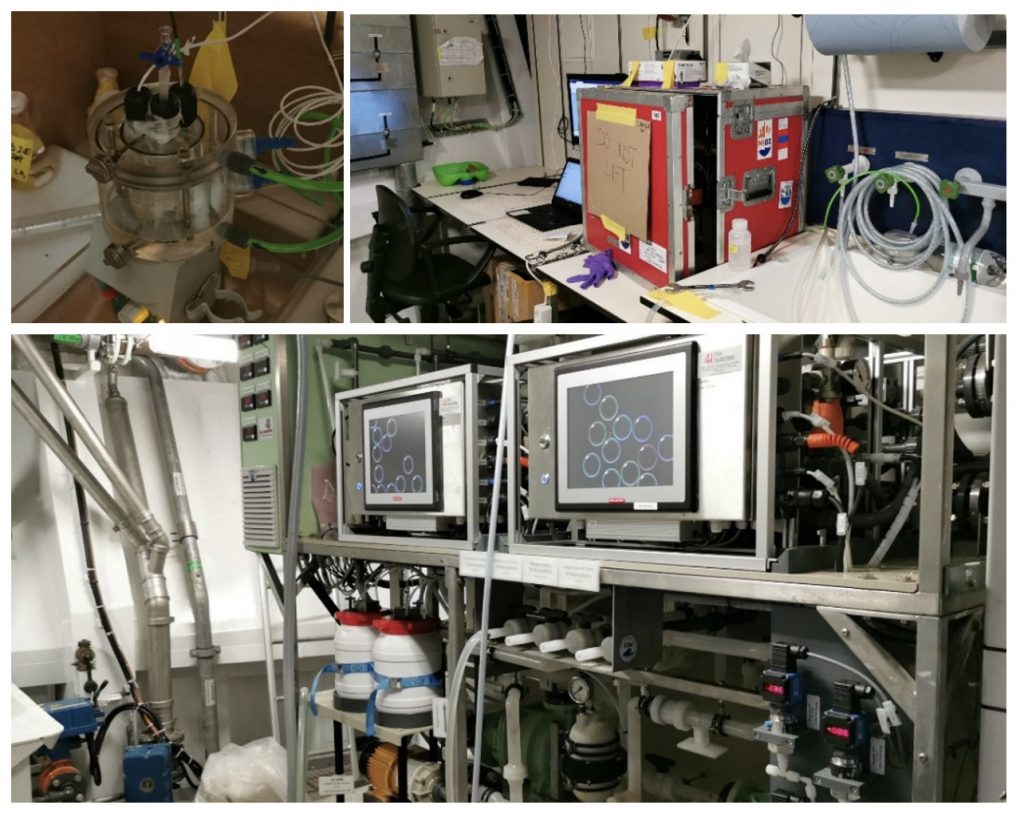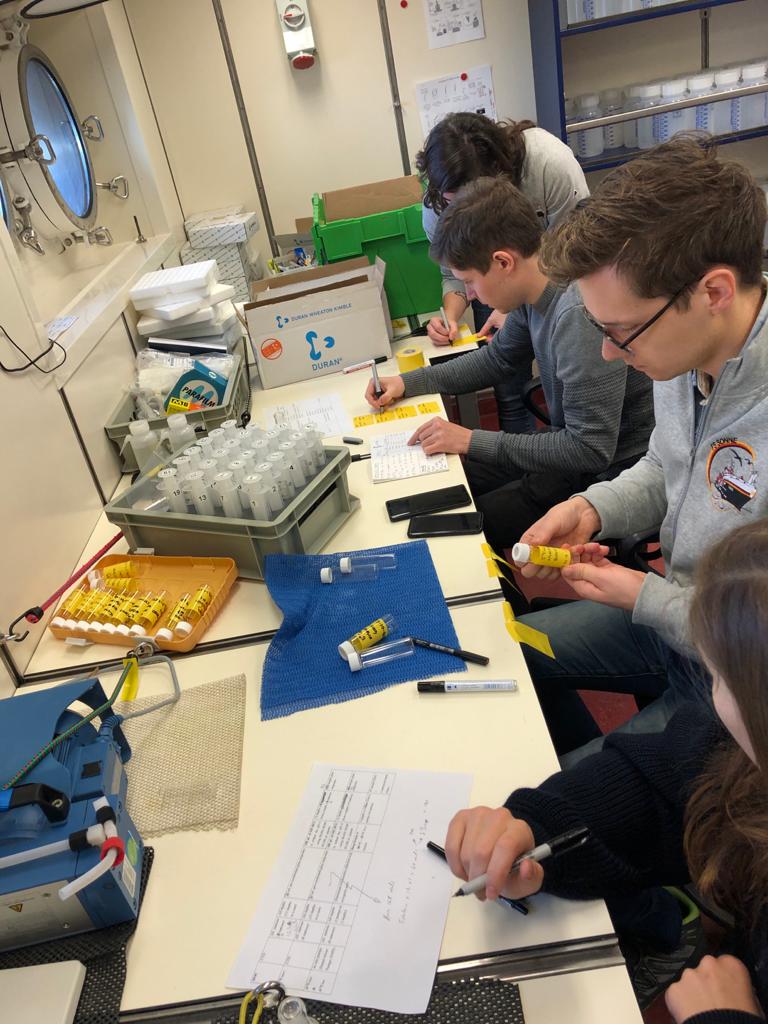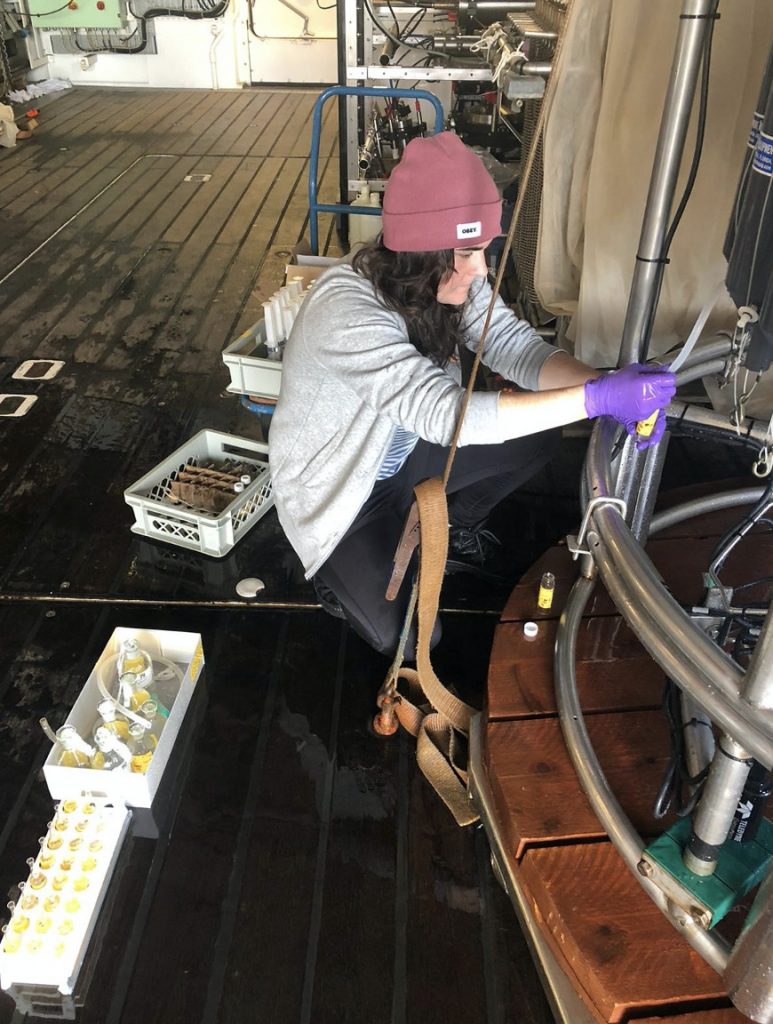NIOZ: Royal Netherlands Institute for Sea Research
On board of the RV SONNE, we have installed a pH optode taking continuous measurements at 30 seconds interval inside a cell through which surface seawater runs uninterrupted (Figure 1). This enables us to obtain high resolution pH data, which is rare even for the North Atlantic Ocean. Measuring parameters of the carbonate system not only sheds some light on the absorption of our CO2 emissions by the oceans, but also on their correlation with other problematic topics such as microplastics. If microplastics affect biological activity, then they also indirectly affect the oceans’ carbon cycle!

From this series of continuous pH measurements, we will try to match pH values with discrete samples taken directly from the pH cell (upper left panel, Figure 1) twice a day, in order to verify that the continuous measurements match known values of pH at different points in time. These discrete samples also include measurements of Si, and PO4 NH4, NO3 and NO2, which will give additional information regarding the behavior of biological activity in the surface waters. Discrete seawater samples were also taken at each station to better constrain the water column, sometimes all the way down to 5000 m water depth (Figure 2).

a. 
b.

SO279 also encountered difficult weather on multiple occasions throughout the cruise. Usually, the other way of getting high resolution pH data is from satellites – however, given satellite data is unusable during heavy cloud cover, we hope this new pH dataset will give some more insights on pH variations during storms. Storm can cause violent turbulences in the surface waters, which are usually well-mixed and micro-bubbles often form as a result, as can be seen in Figure 3. Air bubbles normally significantly affect the resulting pH because of the CO2 present in these bubbles. Thus, one challenge here will be to show that those bubbles are actually part of the sample itself, given they’re a direct influence of the storm and not the ship’s underway system pumps.
by Louise Delaigue, Royal Netherlands Institute for Sea Research (NIOZ)